Water pressure is something you probably don’t think much about – until yours starts causing problems at home.
It can be frustrating to deal with water pressure that drops then comes back. Luckily, you can usually troubleshoot and resolve this issue easily.
Learn the common causes and resolutions for fluctuating water pressure in this guide.
📌 Key Takeaways:
- Water pressure that drops and then comes back might be caused by a faulty well pressure switch or pump, an unstable well water table, an issue with the main shut-off valve, clogged or corroded pipes, peak water usage in your neighborhood, a failing water heater, and more.
- You can usually resolve the issue by replacing the faulty part, installing a water pressure regulator, or hiring a professional to troubleshoot and treat the problem.
Table of Contents
📈 Water Pressure Drops Then Comes Back: 9 Causes
For Well Water Supplies:
These are the issues that are most likely to affect private well owners dealing with water flow and pressure fluctuation:
Faulty Pressure Switch
The pressure switch in your well is designed to “start” and “stop” your well pump depending on the pressure reading inside the pressure tank.
Its purpose is to make sure your well’s pressure tank never runs out of water by activating the well pump when the water level drops. This causes water from the aquifer to refill the pressure tank.
A faulty or failing pressure switch may not always activate the well’s pump when the pressure drops in the tank, causing random dips and peaks in your home’s water pressure.
Related: What to do about a waterlogged pressure tank
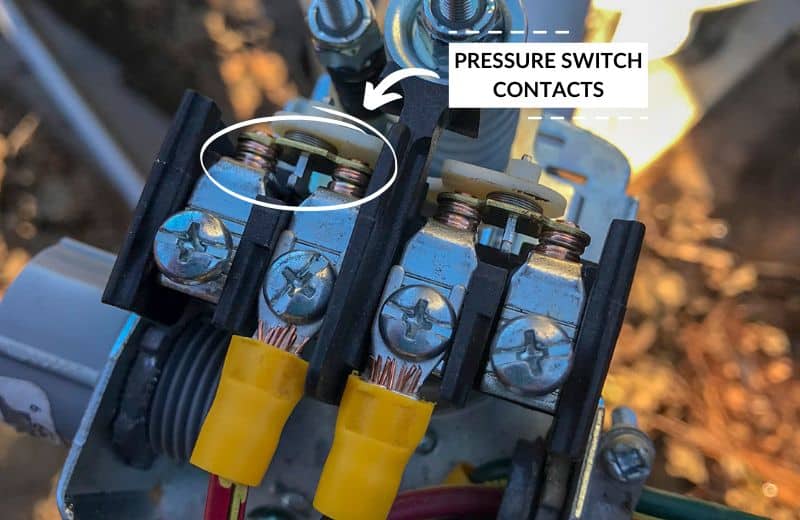
Failing Well Pump
If you notice that your water pressure is sometimes fine, but drops randomly, it might be a sign that the well pump is reaching its final days.
A failing well pump could occasionally struggle to draw enough water out of the well aquifer to supply your home with what it needs, especially during peak water usage.
Unstable Water Table
Perhaps your well’s water table itself is unstable, causing your water pressure to fluctuate depending on the amount of water available in the aquifer at any given time.
You’re more likely to have an unstable water table if you have a shallow well that is more influenced by the elements (heavy rain, drought, etc.) or if you have an old well that may need to be drilled deeper into the ground to access more water.
For City Water AND Well Supplies:
If you have a municipal water supply, the good news is that it’s highly unlikely that your fluctuating water pressure is caused by an issue at the supplier’s end (unless you are otherwise noted).
Instead, dips in your water pressure are likely caused by the following*:
*Note: well owners may also experience most of these issues, aside from the peak neighborhood water usage issue (unless you’re supplied by a shared well).
Corroded Or Clogged Pipes
A clogged pipe could be affecting water flow in your home, causing a water pressure drop during peak usage.
You’re less likely to notice a sudden drop in water pressure with a clogged water supply line. More commonly, your water pressure will simply drop when you need the most water – such as if you’re running several water-using appliances at once.
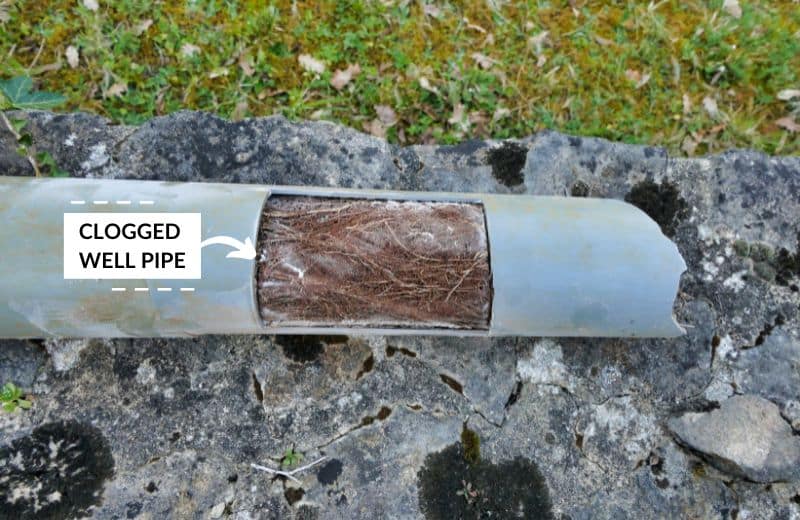
Peak Water Usage In Your Neighborhood
If you notice that the water pressure in your entire house drops at certain times of the day, there’s a good chance that you’re using water during peak supply periods.
Municipal suppliers can deliver hundreds of gallons of water to meet demand. However, that doesn’t mean that your water pressure won’t drop at times when all your neighbors are most likely to be showering and using their water-based appliances.
The hours between 7 AM and 9 AM and the period between 5 PM and 7 PM usually see the most water usage in households. If you can, try to use your appliances or take showers around these times – hopefully, your water pressure should remain consistent.
Failing Water Heater
If you notice pressure issues with your hot water supply, a failing water heater could be to blame.
A water heater that’s clogged with scale or corroded by metals in your water may struggle to keep up with your hot water demand, causing random water pressure drops in your showers and hot water faucets.
Issues With Main Water Supply Valve
Your main water supply valve – the one that sends water into the main water supply line – might have issues that lead to water pressure dropping in your home.
If the valve gets partially clogged or buried, it could cause the valve to close slightly, reducing your home’s water pressure.
Related: Water not working in house all of a sudden
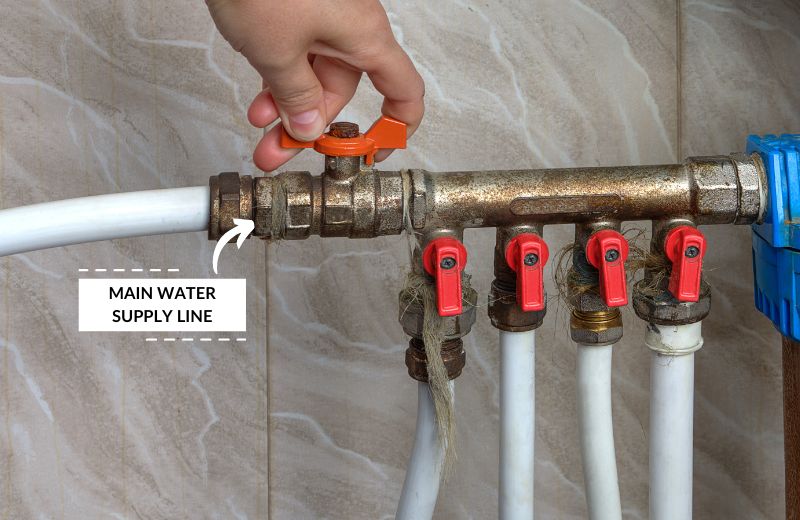
Issues With Fixtures & Faucets
Only noticing fluctuating water pressure in a specific faucet or showerhead? It’s likely the faucet or showerhead itself that’s to blame.
An old faucet or showerhead may become clogged with scale or corroded by certain contaminants in your water supply, reducing flow or causing sporadic water pressure from the fixture.
Clogged Water Filter
This low water pressure issue applies to people with water filters in their plumbing systems.
A clogged filter will gradually reduce your water pressure. While it won’t cause an instant water pressure drop, it will reduce water flowing through your pipes over time.
Water filters are designed to trap contaminants. These contaminants build up in the filter media, eventually disrupting water’s passage through the filter pores.
You can restore pressure by replacing the filter. Depending on your water filter’s size and design, you’ll probably need to replace it every 3-12 months. Check your user manual if you’re unsure.
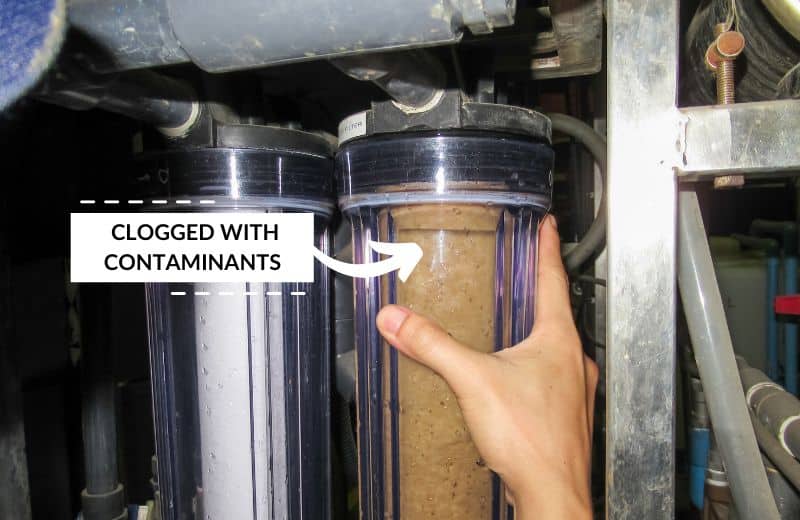
🪛 How To Fix Intermittent Water Pressure In your Plumbing System
Below, we’ve shared the steps you should take to fix fluctuating water pressure in your plumbing system.
Step 1: Determine Your Water Source
There are two likely water sources that should supply your home’s plumbing system: a private well or a municipal supplier.
Private well supplies have their own dedicated set of issues, so knowing where you get your water from will help you to troubleshoot the water pressure issue more quickly.
Step 2: Understand Your Water Pressure
How do you know for certain that your water pressure is fluctuating? Use a water pressure gauge.
Water pressure gauges are inexpensive and easy to use. You could also use a tire pressure gauge if you don’t want to spend money on a dedicated gauge for water.
To take a water pressure reading, follow these steps:
- Choose a location to take the reading. Select an outdoor hose spigot closest to water’s POE into your home. Or, if you think the pressure issue is caused by the piping system in your home, choose a spot further along your water line.
- Turn off all your water-using appliances. Running water in your home will affect the accuracy of your pressure reading.
- Install the pressure gauge. Follow the manufacturer’s instructions for installing the gauge at your water line.
- Test your water pressure. Take a reading from the gauge’s dial. Normal water pressure is between 40 and 50 PSI.
- Take several readings throughout the day. Make a note of the pressure readings. If your water pressure exceeds 60 PSI at any point in the day, you may need to install a pressure regulator.
Step 3: Replace Or Repair Failing Parts
If you’ve determined that your intermittent water pressure is caused by issues with one of your well components or a water pipe or water valve in your home, the obvious solution to restore your water pressure is to fix or replace the faulty part.
You might be able to do this yourself, or you might need to hire an expert plumber or well contractor to do it for you.
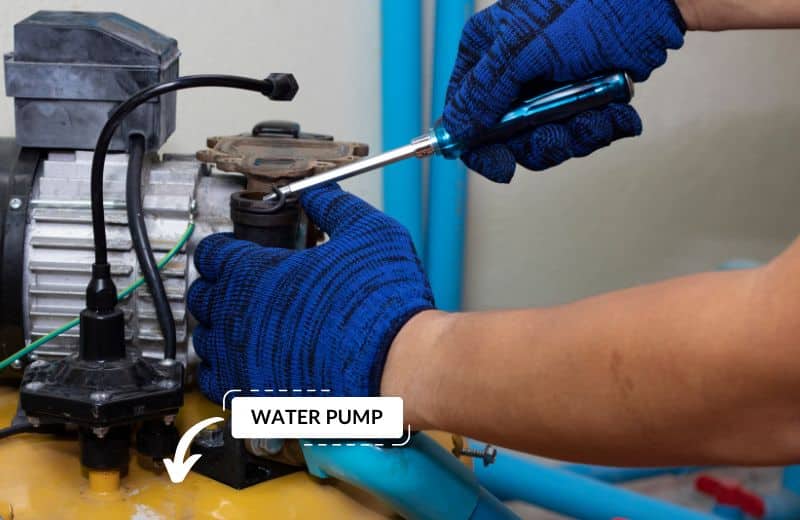
Alternative Step 3: Install A Water Pressure Regulator
A water pressure regulator, or the water pressure reducing valve (PRV), reduces water pressure to a safe level before the water reaches your pipes and fixtures.
Installing a water pressure regulator is a good solution if you have periods of water pressure above 60 PSI, before it drops down to normal levels. However, it won’t resolve very low water pressure issues.
Already got a water pressure regulator? Check that pressure regulator malfunction isn’t the cause of your fluctuating water flow and pressure. Repair or replace the regulator if necessary.
Optional Step: Hire A Professional Plumber Or Well Contractor
In some cases, the cause of the fluctuating water pressure in your home will be too complex for you to deal with yourself. A blocked pipe that needs replacing, a faulty well pump, or a well that’s drying out will probably need professional troubleshooting and repairs.
Contact several plumbers or well contractors in your area and let them know about the issues you’re dealing with. Choose somebody with plenty of experience and positive customer feedback.
The cost of hiring a plumber or contractor to fix your water pressure issues could be anything from $75 to $1,000+, depending on the cause of the issue and the cost of the part that needs to be repaired or replaced.

❔ Water Pressure Drops Then Comes Back: FAQ
Why does my water pressure come and go?
Your water pressure might come and go if you’re dealing with a faulty well pump or pressure switch (for private well owners) or if you have a clogged pipe, a failing water heater, faulty valves, and problematic fixtures, which could all prevent water flow properly after a short period of use.
What is a good water pressure?
A good water pressure in most homes is between 40 and 50 PSI. If your water flow and pressure fluctuates, you might need to fix a clogged or faulty valve, pipe, appliance, or component in your plumbing system.
How can I check my water pressure?
You can check the pressure in your home by using a pressure gauge. These are quick and easy to use and can give you pressure readings at various times throughout the day.
Why do I lose water pressure after a few minutes?
You might lose pressure after a few minutes if there’s a big clog in the area where a pipe in your home is connected to the main whole home water supply pipe. There might also be a crack in the pipe, or you might have a faulty valve or an issue with your pressure regulator.
Why did my water pressure suddenly change?
Your water pressure might suddenly change if you have a faulty appliance or plumbing fixture, or a blocked or leaking water supply pipe. A partially clogged water filter will also gradually reduce your water pressure over time.

